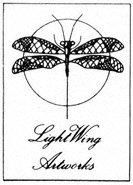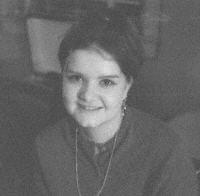|
In Memory of Christie Whaley 1943-1984 Biography Christie Whaley was born in 1943 to poor Southern parents with ancient and aristocratic lineage. She successfully avoided the debutante issue through sheer cheek and rebellion, but nothing could erase the formative years spent as a pseudo-Belle below the Mason-Dixon Line. Fortunately, her outspoken voice as a Radical Feminist Peacenik helped her, for the rest of her life, overcome any limitations of her upbringing. She was challenged all her life with Juvenile Diabetes and eventually, at age 40, died of complications related to her lifelong struggle. Although she graduated with a Bachelor's degree in English from Duke University in 1965, she spent her life pursuing her dream of being an artist. In the mid-to-late 60s and early 70s, Christie lived in New York City, where she was an active part of the Gurdjieff movement, and a stop on the draft-dodger "underground railroad" to Canada. During this time, she perfected her calligrapher's hand, culminating in a 20-page, hand-lettered and illustrated bread cookbook, and developed a trademark pen-and ink style that would inform one of her largest bodies of work. Her interest in social justice and alternative religious traditions followed her all her life, eventually guiding her to the Mountain View Friends (Quaker) Meeting, where she worshipped (and protested) until the day she died. Her alternative religious influences drew her to spiritual and social subject matter for her art, although as she grew older, she incorporated many new influences, including a husband in 1969 and a daughter in 1971. In 1973, she moved to Denver, Colorado with her family and for the first time embraced the Western wilderness. She began working in watercolor in earnest, most often painting natural subjects, from landscapes to love affairs. During most of these years she operated a communistic boarding house, supplementing her artistic commissions and supporting her pacifistic roots. She spent as much time as possible in nature, whether a city park near her house, the foothills of the Rockies, or later in life, Yellowstone National Park. Some of her regional subjects are still easily recognizable today, and many of her animal subjects were studied not "in the wild," but at Washington Park or the Denver Zoo! In 1978, she opened Lightwing Artworks, a greeting card company featuring her pen-and-ink work, which provided an income for the rest of her life. Even after her death, a number of planned lines were discovered that she hadn't had time to release. Aside from canvas and print, much of her hard-to-find work was one form of folk art or another—fabric arts from clothing to needlepoint canvasses, manufactured toys, puppets, and dolls of all sorts, and original quilting patterns. When Christie died in 1984, she left behind not just a grieving family, but also her great talent and the example of her determination to succeed regardless of her challenges.
Who signed this work, anyway? Christie's life as an artist began in the mid-60's under her maiden name, Christie Miller. In 1969, she took her husband's name and began signing work Christie Phillips. Near the very end of her life, in 1983, she divorced her husband and began painting under Christie Whaley. (Incidentally, just to confuse things a little more, her daughter switched names in 1995, taking Christie as her permanent last name.) Most of Christie's folk art is unsigned.
Home | Calligraphy | Cookbook | Pen-and-Ink | Needlework | Watercolors | Trunkers | Woodcut Prints | Folk Art | Contact |


